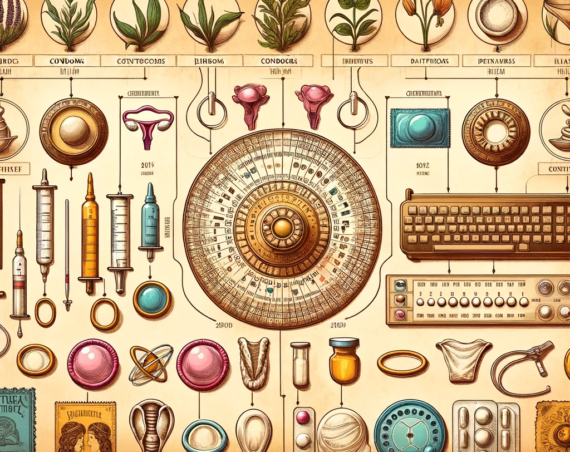
Are you at the doorstep of the much anticipated “big change” but not quite ready for it? Are you busy setting your career, and you think motherhood can wait? It sure can! With such immense advancement in medical science, you can preserve your best quality embryos for your future dream of becoming a mother.
Pregnancy and embryo freezing is an old affair that started during the 1980s. Since then, women and couples have been choosing embryo freezing for multiple reasons. Here, we’ll dive deeper into understanding what embryo freezing is all about. Read on.
What Is Embryo Freezing?
Embryo freezing is a laboratory-based procedure to preserve viable embryos for future use. You can decide on preserving embryos if you have future plans to get pregnant. If the fertilization process results in more than one embryo, then the doctor can sort out the best of the lot and preserve the rest.
The freezing takes place at a temperature as low as -321ºF in a sealed airtight container. However, there is a difference between embryo freezing and ovule freezing. Embryo freezing preserves the product after fertilization, while ovule freezing preserves the unfertilized oocyte.
The Purpose of Embryo Freezing
During in vitro fertilization, doctors often use ovarian stimulators to produce a more significant number of eggs. These eggs, after fertilization, produce multiple viable embryos. The doctor keeps one healthy embryo to transfer to the mother’s uterus and preserves the rest viable ones as frozen embryos. It serves numerous purposes.
- Embryo preservation saves the repeated process and expense of ovary stimulation in case of future pregnancy.
- Injecting fewer embryos into a mother’s womb reduces the chances of producing triplets or multiple gestations.
- With embryo freezing, you can wait till the favorable physiological environment for the mother’s womb to raise a healthy child.
Who Needs Embryo Freezing
Mothers often suffer from medical conditions that don’t work in favor of carrying a baby in their womb. Therefore, embryo preservation comes as a convenient option for them. Here we’ll have a look at who all need embryo freezing.
- Women with previous genetic disorders can interfere with reproduction.
- Would-be-moms who will soon undergo radiation therapy, especially chemotherapy.
- Women that are going through medical conditions and are under prescribed medication might affect fertility.
- Those who don’t have child carrying capability.
- LGBTQ+ community people or same-sex couples who want children.
- Single fathers.
- Women who are not yet ready to face the significant change of motherhood.
The Process of Embryo Freezing
Before we get into the details of embryo freezing, we must prepare the ground for it. Embryo freezing is an integral part of an artificial fertility process called In Vitro fertilization. Here we’ll scratch through the surface for a deeper analysis of the embryo freezing process.
In Vitro Fertilization or IVF
In IVF, the doctor first collects unfertilized eggs from the woman and sperms from the man. Then the collected samples are transferred together to a culture-palate in a laboratory-prepared medium suitable for fertilization. Once the fertilization process completes, the newly formed embryos are ready for the further process of embryo freezing.
Cryopreservation
The embryo freezing or cryopreservation process takes place after the doctor picks out the healthy, viable embryos. The process involves freezing the fluid content of the embryo cell. To protect embryo cells from damages during freezing, doctors use cryoprotective agents (CPA).
- Slow Freezing
Here the doctor keeps adding CPA to the embryo in regular intervals of 10 to 20 minutes in gradually increasing strengths. The slow freezing process takes as long as two hours. At -321ºF temperature, the embryo is all set to enter the liquid nitrogen chamber for preservation.
- Vitrification
Here the strength of CPA is higher, and the process is faster. Chances are there that the CPA can damage the cell wall of the embryo. Hence, the doctor immediately transfers the embryo to the liquid nitrogen right after adding the CPA. The rapid transfer of the embryo to the liquid nitrogen stops the formation of ice, and therefore, the embryo stays intact.
How Long Can You Freeze Embryo?
You can keep the embryo in a frozen condition for several years, even forever. The embryos stay in a liquid nitrogen chamber at a temperature as low as -321ºF. In such low temperature, no biological or biochemical activity, like aging, can take place.
Hence, the embryo cells stay intact without decay and damage. Studies have reported successful pregnancy with frozen embryos even after ten years.
Survival Rate of Frozen Embryos
If the doctor picks up the best quality embryos for preservation, then embryo freezing shows a reasonable survival rate after thawing. The survival rate of the frozen embryo, however, depends on the freezing process.
If you choose rapid freezing or vitrification, the survival rate of the embryo is as high as 95%. Whereas slow freezing gives a survival rate of about 86%. It is due to the prolonged cooling technique and exposure to CPA for longer. CPA appears harmful to the delicate embryo cells. Hence, the cell wall is likely to get damaged during the slow freezing process.
Embryo Freezing Side Effects
Embryo freezing is indeed a helpful way to preserve embryos for further use. But it shows a handful of side effects and complications when the doctor extracts the oocytes.
- Frequent bloating.
- Muscle and abdominal cramps.
- Lack of appetite.
- Bleeding
- Altered discharge from the vagina.
- Unusual infections.
- Unwanted ovarian stimulations.
Is A Fresh Embryo Better Than A Frozen One?
A study reported statistical data on more than 1000 embryo transfers, including fresh and frozen, in the International Journal of Reproductive Biomedicine. There is no such remarkable difference found in these two varieties.
However, a more recent study in 2014 reported that frozen embryos are more efficient than fresh embryos to produce healthier babies. Also, frozen embryos come as a more effective and viable option.
Conclusion
To conclude, embryo freezing can turn out as a convenient option for those women with additional complications. Or you can choose embryo freezing if you’re not yet ready for motherhood. As there are minor side effects, often women go skeptical about cryopreservation. But if you can afford to bear the trouble, it’s a helpful alternative to mainstream fertility.



